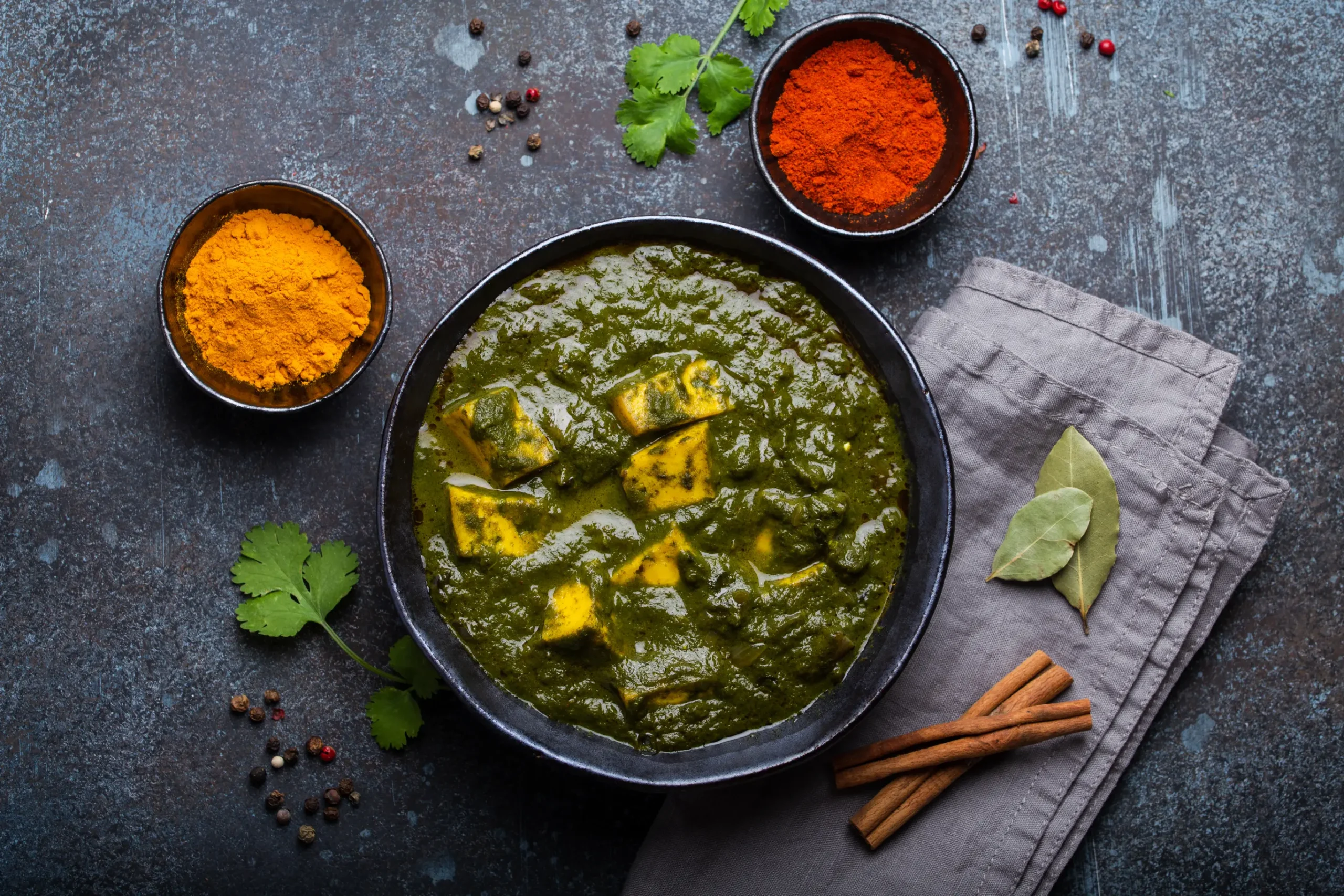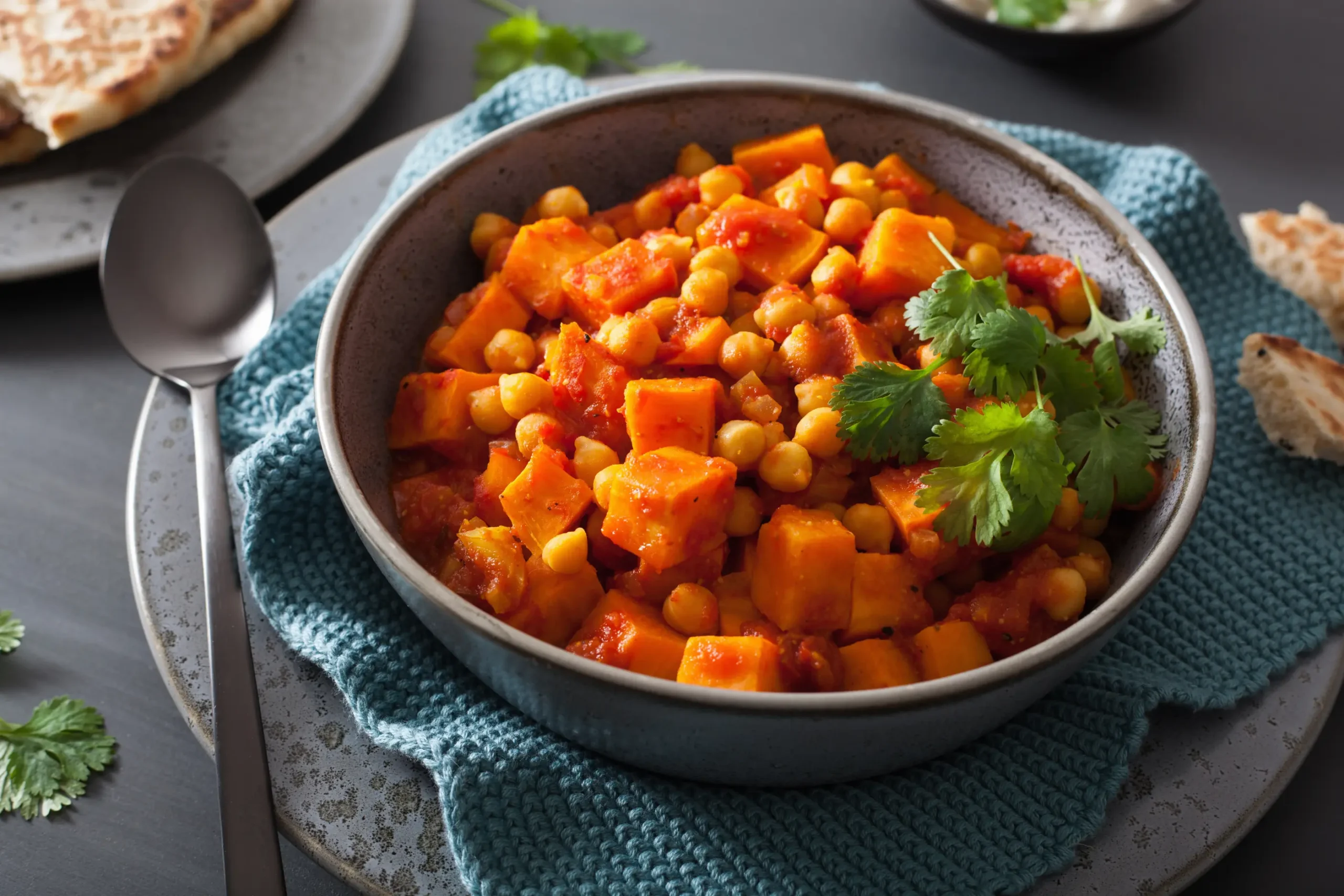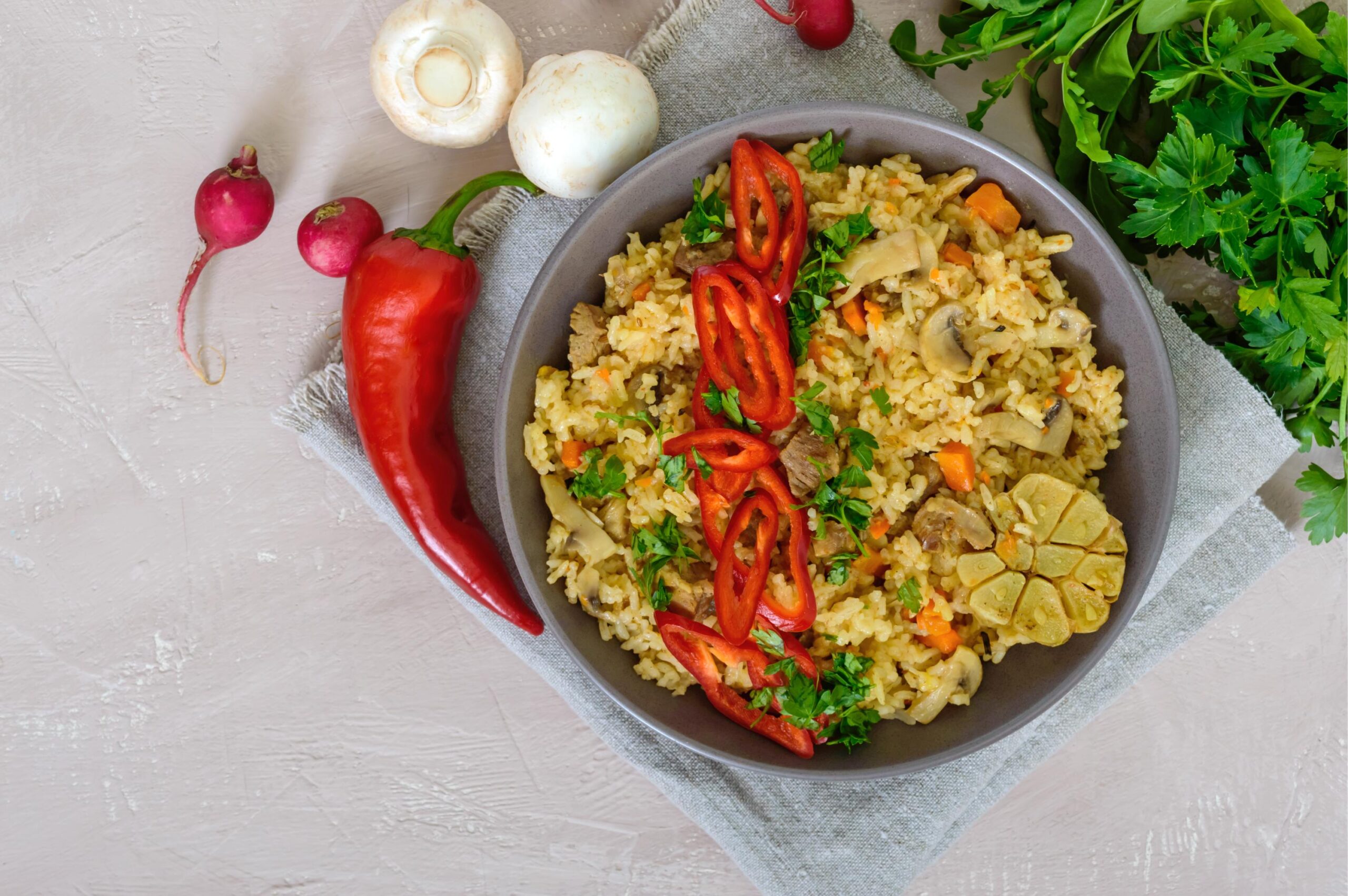Perimenopause can be a rollercoaster ride of hormonal shifts. Hot flashes, night sweats, mood swings, and fatigue are just a few of the unwelcome guests that might show up at your party.
But fear not! Food, as always, can be a powerful ally in navigating this transition. By incorporating the right foods into your diet, you can fuel your body with the nutrients it needs to manage symptoms and thrive during perimenopause.

Understanding the Hormonal Shifts
During perimenopause, your body starts to wind down estrogen production. This decline disrupts the delicate hormonal balance that previously kept everything in check. Estrogen plays a role in regulating metabolism, mood, sleep, and bone health, so its decrease can lead to a cascade of symptoms.
Dietary Strategies for Perimenopause
Here’s where the power of food comes in. By focusing on a well-rounded diet rich in specific nutrients, you can support your body’s natural adjustments and mitigate perimenopause symptoms.
- Focus on Whole, Unprocessed Foods: Ditch the processed junk and embrace a diet rich in whole grains, fruits, vegetables, lean proteins, and healthy fats. These foods provide essential vitamins, minerals, and fiber that your body needs to function optimally.
- Become BFFs with Fiber: Fiber is your new best friend during perimenopause. It helps regulate blood sugar levels, which can become erratic due to hormonal changes, and keeps you feeling fuller for longer, aiding in weight management, a common concern during this time. Fruits, vegetables, whole grains, legumes, and nuts are all excellent sources of fiber.
- Embrace Plant-Based Power: Plant-based foods are loaded with phytoestrogens, which are plant compounds that mimic the effects of estrogen in the body. While not exactly the same as human estrogen, phytoestrogens can offer some relief from symptoms like hot flashes and night sweats. Soybeans, lentils, flaxseeds, fruits, and vegetables are all rich in phytoestrogens.
- Don’t Skimp on the Healthy Fats: Healthy fats are not the enemy! In fact, they play a crucial role in hormone production, cell health, and satiety. Include sources of unsaturated fats like olive oil, avocado, nuts, and fatty fish in your diet.
Powerhouse Foods for Perimenopause
Now, let’s delve into some specific powerhouse foods that can be incredibly beneficial during perimenopause:
- Fatty Fish: Salmon, sardines, mackerel, and tuna are brimming with omega-3 fatty acids, which have been shown to reduce hot flashes and improve mood. Omega-3s also contribute to heart health, which becomes increasingly important with age.
- Flaxseeds: These tiny seeds are a triple threat, offering fiber, healthy fats, and plant-based lignans that act like weak estrogens. Grind flaxseeds into your oatmeal, smoothies, or yogurt for an added nutritional boost.
- Cruciferous Vegetables: Broccoli, cauliflower, Brussels sprouts, and kale are all members of the cruciferous family. They contain compounds called indoles, which may help with estrogen metabolism and reduce your risk of certain cancers.
- Soybeans and Tofu: Soybeans are a top source of phytoestrogens. Tofu, made from soybeans, is a versatile protein source that can be incorporated into various dishes. Aim for minimally processed soy products.
- Berries: Berries are a delicious source of antioxidants, which help combat free radical damage and may improve overall health. They are also a good source of fiber and vitamin C, which is essential for immune function.
- Leafy Green Vegetables: Load up on your spinach, kale, and collard greens! These nutrient-dense vegetables are packed with vitamins, minerals, and fiber, all of which are crucial for maintaining good health during perimenopause.
- Whole Grains: Opt for whole grains like brown rice, quinoa, and whole-wheat bread over refined grains. Whole grains provide sustained energy, thanks to their complex carbohydrates and fiber content.
- Nuts and Seeds: Nuts and seeds are a great source of healthy fats, protein, and fiber. They are also a convenient and portable snack option. Almonds, walnuts, chia seeds, and pumpkin seeds are all excellent choices.
Sample Meal Plan for Perimenopause
Here’s a sample meal plan to give you an idea of how to incorporate these powerhouse foods into your diet:
- Breakfast: Greek yogurt with berries, granola, and a sprinkle of flaxseeds
- Lunch: Grilled salmon salad with quinoa, mixed greens, and a vinaigrette dressing
- Snack: Handful of almonds and dried cranberries
- Dinner: Tofu stir-fry with vegetables and brown rice
- Snack: Cottage cheese with chopped vegetables
Additional Tips
- Keep a Food Diary: Tracking your food intake for a few days can help you identify areas for improvement and identify any potential food triggers for your symptoms.
- Read Food Labels: Pay attention to added sugars and sodium content when choosing packaged foods. Opt for options with minimal processing and added ingredients.
- Cook More at Home: Cooking at home allows you to control the ingredients and portion sizes of your meals.
- Make Gradual Changes: Don’t try to overhaul your diet overnight. Introduce small, sustainable changes that you can stick with in the long run.
- Enjoy Your Food: Food should be a source of pleasure and nourishment. Experiment with new recipes, explore different cuisines, and find healthy ways to indulge your sweet tooth.
By making these adjustments, you can transform your diet from a foe to a powerful ally during perimenopause.
You are not alone in this journey. With a little knowledge, planning, and self-compassion, you can embrace this transition and feel your best during perimenopause and beyond.
Perimenopause Powerhouse – Indian Recipes for a Thriving Transition
In addition to the general dietary advice, here are 3 delicious Indian recipes packed with perimenopause-fighting nutrients:
Saag Tofu Masala (Spinach and Tofu Curry)

This flavorful curry is a vegetarian powerhouse. Spinach boasts iron and vitamins essential for maintaining energy levels. Tofu, rich in protein and plant-based estrogens, helps manage hormonal fluctuations.
Ingredients
- 1 tbsp ghee or vegetable oil
- 1 medium onion, chopped
- 1 inch ginger, grated
- 2 cloves garlic, minced
- 1 green chili pepper, chopped (optional)
- 1 tsp cumin seeds
- 1/2 tsp coriander seeds
- 1 tsp ground turmeric
- 1 tsp red chili powder (adjust to your spice preference)
- 1 tsp garam masala
- 1 (14.5 oz) can diced tomatoes
- 1 cup chopped fresh spinach or 1 package frozen spinach, thawed and squeezed
- 1 block (14 oz) firm tofu, drained and cubed
- 1/2 cup water or vegetable broth
- Salt to taste
- Cilantro, chopped (for garnish)
Instructions
- Heat ghee or oil in a large pan or Dutch oven over medium heat. Add cumin and coriander seeds and let them sizzle for a few seconds.
- Add chopped onion and cook until softened, about 5 minutes. Add ginger, garlic, and green chili pepper (if using) and cook for another minute.
- Stir in turmeric, red chili powder, and garam masala. Cook for 30 seconds, stirring constantly, to release the fragrance of the spices.
- Add diced tomatoes and simmer for 5 minutes, breaking them down with a spoon.
- Add chopped spinach or thawed and squeezed frozen spinach. Cook until wilted, about 2 minutes.
- Pour in water or vegetable broth and season with salt. Bring to a simmer.
- Gently fold in cubed tofu and heat through for 2-3 minutes.
- Garnish with fresh cilantro and serve hot with brown rice or roti (Indian flatbread).
Spiced Chickpea and Sweet Potato Curry

This hearty curry is packed with protein from chickpeas and fiber from sweet potatoes, both of which help manage blood sugar and improve satiety. Turmeric adds its anti-inflammatory properties, beneficial during perimenopause.
Ingredients
- 1 tbsp coconut oil
- 1 medium onion, chopped
- 1 inch ginger, grated
- 2 cloves garlic, minced
- 1 green chili pepper, chopped (optional)
- 1 tsp cumin seeds
- 1/2 tsp coriander seeds
- 1 tsp ground turmeric
- 1 tsp red chili powder (adjust to your spice preference)
- 1 tsp garam masala
- 1 (14.5 oz) can diced tomatoes
- 1 (15 oz) can chickpeas, drained and rinsed
- 1 medium sweet potato, peeled and diced
- 1 cup water or vegetable broth
- Salt to taste
- Cilantro, chopped (for garnish)
Instructions
- Heat coconut oil in a large pan or Dutch oven over medium heat. Add cumin and coriander seeds and let them sizzle for a few seconds.
- Add chopped onion and cook until softened, about 5 minutes. Add ginger, garlic, and green chili pepper (if using) and cook for another minute.
- Stir in turmeric, red chili powder, and garam masala. Cook for 30 seconds, stirring constantly, to release the fragrance of the spices.
- Add diced tomatoes and simmer for 5 minutes, breaking them down with a spoon.
- Add diced sweet potato and chickpeas. Pour in water or vegetable broth and season with salt. Bring to a simmer.
- Cover and cook for 15-20 minutes, or until the sweet potato is tender-crisp.
- Adjust the consistency of the curry by adding more water or broth if desired.
- Garnish with fresh cilantro and serve hot with brown rice or roti (Indian flatbread).
Moong Dal Khichdi with Roasted Vegetables

This recipe is a comforting and fiber-rich dish packed with protein from moong dal (lentils) and healthy fats from roasted vegetables.
Ingredients:
- Moong dal (split green lentils)
- Basmati rice
- Ghee or oil
- Vegetables (broccoli, cauliflower, carrots) – chopped and roasted
- Ginger, garlic paste
- Spices (cumin, turmeric, coriander powder)
- Cilantro for garnish
Instructions:
- Rinse and soak the moong dal for 30 minutes.
- Roast chopped vegetables with a little oil until tender-crisp.
- In a pressure cooker, heat ghee or oil, add ginger-garlic paste, and saute for a minute.
- Add spices and cook for a few seconds.
- Add rinsed moong dal and basmati rice.
- Add water (check package instructions for water quantity).
- Pressure cook until the dal and rice are cooked through.
- Gently fold in the roasted vegetables.
- Garnish with fresh cilantro and serve hot.
These are just a few examples, and you can adapt them to your taste and dietary preferences. The key is to focus on incorporating the powerhouse ingredients mentioned throughout this article to create delicious and nutritious meals that support your well-being during perimenopause.
So embrace this time of change by nourishing your body with these perimenopause-friendly ingredients. You’ll be well on your way to a smooth transition filled with vitality.
Citations:
https://www.womenshealthmag.com/uk/food/healthy-eating/a45429123/perimenopause-diet/
https://emmasnutrition.com/7-foods-to-eat-more-of-during-the-perimenopause/
https://www.ncbi.nlm.nih.gov/pmc/articles/PMC10780928/




